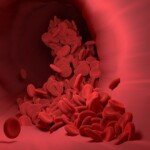Navigating the CNC machining world: Your basic guide
In the modern manufacturing field, computer numerical control (CNC) processing is a cornerstone technology that converts raw materials into complex, high-precision components with excellent efficiency. From aerospace turbines to complex medical implants, CNC machines are powered by innovation. This guide takes a deep dive into the basic elements of CNC machining, explores its functions, the key advantages of five-axis technology, and its implications for manufacturing projects.
CNC machining explains: core accuracy
CNC machining is a subtraction manufacturing process. Computer-controlled machines, guided by pre-programmed instructions (G codes) to remove material (whether metal, plastic, wood or composite) from solid blocks (workpieces). This automation provides unparalleled repeatability, accuracy, and the ability to complex geometry that cannot be achieved through manual methods. Key components include:
- Controller: this "brain" Interpret CAD/CAM data.
- Drive system: Precisely locate the tools and workpieces motors (servo or stepping).
- machine tool: Rotate the spindle of the cutting tool and the axis that moves relative to the workpiece.
Common CNC machine types: power from 3 axes to 5
Machines are mainly classified according to their degrees of freedom (axis of motion):
- 3-axis CNC: Base. The movement occurs along the X (left and right), Y (forward) and Z (upper downward) axes. Ideal for prismatic parts and simpler geometric shapes. Although versatile, for complex shapes, partial repositioning of multiple settings is often required, increasing time and potential alignment errors.
- 5-axis CNC: Represents the pinnacle of versatility and precision. It adds two rotation axes (usually A-axis tilt tool/spindle head and B-axis rotatable table, or variants like A/C). This allows the cutting tool to approach the workpiece from almost any direction In a setting.
Why choose five-axis CNC machining? Unlock key advantages
Transition from 3 axial to 5 axial is not only incremental; it is transformative:
- Unrivaled complex geometric shapes: Seamless machine profile, undercut, deep cavity and complex organic shapes with fewer shafts.
- Single setting of glory: One fixture does most machining operations. This greatly reduces production time, handles errors and improves overall accuracy.
- Top surface finish: Continuous optimal tool contact angles can make the tool shorter, minimize vibration and achieve higher quality finishes, often reducing or eliminating post-processing needs.
- Enhanced accuracy and shorter cycle times: Due to reduced settings, smarter tool paths, and the ability to optimally position workpieces, complex parts are processed faster and more accurate.
- Advanced materials mastery: By maintaining optimal cutting conditions and access to tool stiffness, you can excel at machining strong alloys and exotic materials.
Where five-axis CNC is good at: Powering diversified industries
This technology is essential in industries that require extremely precise and complex parts:
- aerospace: Turbine blades, engine components, structural elements.
- car: Prototypes, sophisticated engine parts, custom suspension components.
- Medical: Orthopedic implants, surgical instruments, diagnostic equipment parts.
- vitality: Components of turbines (wind, air), valves, drilling equipment.
- defense: Key structural components, dedicated optical housing.
- Industrial Machinery: Complex gears, pump housings, molds/molds.
Choose the right partner: Excellent processing is important
Success depends not only on the machine with 5 axes. Expertise, technology and service are crucial:
- Advanced Technology: State-of-the-art machines are crucial, but paired with complex CAM software, can be used for conflict-free, optimized tool paths.
- Deep technical expertise: Engineers are proficient in CAM programming, fixture design, tool selection and materials science to turn blueprints into ideal parts.
- Material mastery: Proven capable of handling a wide range of capabilities: aluminum, steel, titanium, stainless steel, brass, plastics and high performance alloys.
- Comprehensive Services: Find partners who offer true one-stop solutions: prototyping, mass production, strict quality control (CMM inspection), post-processing (anodizing, electroplating, lacquering, painting, heat treatment) and secondary finishing.
- Efficiency and reliability: The proven ability to deliver high-quality parts in a tight schedule is crucial.
Partners for complex solutions: huge differences
Professional partners shine when your project requires the highest level of accuracy, efficiency and expertise. Great It reflects the peak of five-axis CNC machining capabilities. Equipped with a cutting-edge five-axis CNC center and supported by deep production proprietary technology, we excel in solving challenging metal parts manufacturing. Our engineers are experts in solving complex manufacturing problems, leveraging true five-axis technology to achieve results that are not available with a simple machine. In addition to main machining, we offer a comprehensive one-stop post-processing and completion service to ensure your parts are ready for assembly. We handle a wide range of materials, specializing in rapid customization and reliable production. To shape the accuracy of the future, work with experts like Greatlight to ensure that your key components are effective, cost-effective and the most stringent standards. Improve Manufacturing – Get quotes for custom precision parts now.
in conclusion
CNC machining, especially the advanced functions of five-axis technology, is the basis of modern precision manufacturing. Understanding the differences between machine types, the significant advantages provided by five-axis machining in terms of complexity, accuracy and efficiency is crucial to making informed decisions. Whether you are developing state-of-the-art aerospace components or complex medical equipment, work with technologically advanced and experienced providers to ensure your projects are executed with the highest quality, reliability and competitive advantage. In the demanding landscape of precision engineering, leveraging the expertise provided by professional manufacturers is not only an option, but a strategic command.
Frequently Asked Questions about CNC Processing (FAQ)
Q1: What are the main differences between 3-axis, 4-axis and 5-axis CNC machining?
- A1: 3 Axis: Linear movement (X, Y, Z). Suitable for relatively simple parts, but may require multiple settings for complex functions. 4 axis: Add a rotation axis (usually A-axis – rotates the workpiece around X) so that it is possible to machin the sides of the cylinder or to a simple curve in a single setup. 5 axis: Add to second Rotating axis (usually B-axis – rotate about Y or C-axis – rotate about Z). This allows very complex geometry to be processed from almost any angle in almost any setting, providing maximum flexibility and precision. True 5-axis machining involves simultaneous movement of all five axes during the cutting process.
Q2: Is the 5-axis CNC machining only for the most complex parts?
- A2: Although it is Basic For extremely complex geometric shapes, usually any Needs high precision or multiple faces. The benefits of a single setting greatly reduce labor, potential errors and fixed costs compared to multiple 3-axis settings, which makes it increasingly economical to many production scenarios rather than the most complex situations.
Q3: What materials can CNC process?
- A3: The scope is very wide! Common metals include aluminum, steel (various grades), stainless steel, brass, copper, titanium and magnesium alloys. Plastics are also routinely processed with ABS, Nylon (PA), polycarbonate (PC), PEEK and PTFE. Senior partners also handle Superalloys (Inconel, Hastelloy) and composites.
Q4: What are the main advantages of CNC machining in manual processing or 3D printing?
- A4: compared to Manual processing: CNC provides excellent repeatability, consistency, accuracy of complex shapes, production speed and scalability. compared to 3D printing (additive manufacturing): CNC provides higher accuracy and tighter tolerances, quality mechanical properties in the final section (especially isotropic strength), wider material selection and material properties (metals, dense plastics), better surface treatment "Violation of rules" Usually better suited for functional end-use parts. 3D printing stands out in extreme geometric complexity (internal lattice) and prototypes, while the speed of surface finishes is key.
Question 5: How important is tolerance in CNC processing and what affects it?
- A5: Tolerance – Allowed variations in some dimensions – is critical for function and assembly. Implementing tight tolerances depends on:
- Machine calibration and rigidity (the high-end 5-axis machine performs excellently here).
- Tool conditions and selection.
- Fixed stability.
- Material properties (e.g. thermal expansion).
- CAM programming and tool path strategies.
- Operator skills and quality control processes (e.g. CMM).
- Experienced manufacturers like Greatlight specify achievable tolerances based on parts, materials, and processes to ensure that your design intent is met.

















